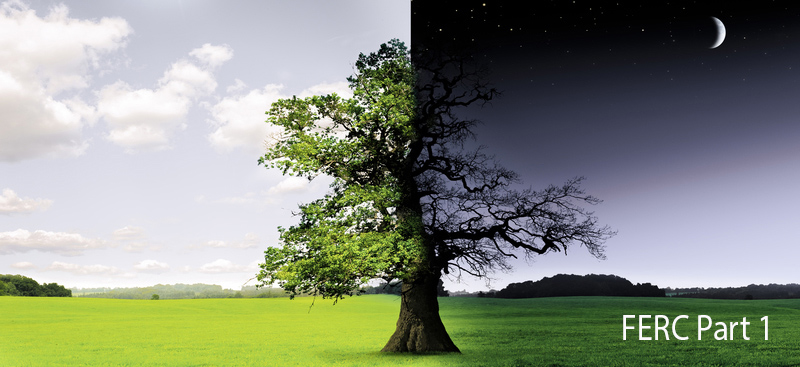The FERC 55 dB(A) Ldn Requirement – Part 1: Definitions

In this post, we need to get a little technical. However, it is well worth it to understand what exactly 55 dB(A) Ldn is, as this will lay the foundation for the following posts, which discuss how the Ldn is implemented in practice. I describe the Ldn in words and mathematically. I also shed some light on the 10 decibel penalty and show some of the (correct) variations in nomenclature.
Ldn Defined in Words
Ldn is the symbol for the day-night average sound pressure level, which is the sound level averaged over a 24-hour time period, with one wrinkle that makes it different from a typical sound level average. Whatever sound level is measured at night, 10 decibels is added to that measured level (and consequently is included in the average). The additional 10 decibels at nighttime is a penalty that accounts for people's greater sensitivity to noise at night (when most of us are trying to sleep). The 10 decibel penalty is not physical; it is not a measurable quantity. It is just a number that is arithmetically added to the nighttime portion of the sound level measurement.
Ldn Defined Mathematically

where
Ld = average sound level over daytime hours, between 7:00 a.m. and 10:00 p.m.
Ln = average sound level over nighttime hours, between 10:00 p.m. and 7:00 a.m.
Note that we average over 24 hours in total, but weighted by the 15 hours of Ld and the 9 hours of (Ln + 10), where the +10 is the nighttime penalty.
More on the 10 decibel Penalty
As an example to give voice to the rationale behind the ten decibel penalty, we could say, "for the 9 hours of nighttime, even though the sound level meter really reads 42 dB(A), we're going to call it 52 dB(A), because by golly, we're trying to sleep and that compressor station noise just seems louder at night and it's more bothersome! For the 15 hours of daytime, we will just take what the sound level meter is giving us because we're going about our day and the noise isn't as bothersome." Again, the 10 decibel penalty is not a measured quantity, it is simply an adjustment factor that attempts to account for the otherwise unquantifiable "bothersome-ness" that many of us feel about noise at night.
Nomenclature Variations
The Ldn is sometimes represented as "DNL." Either is fine and it comes down to preference or convenience. The Ldn is almost always A-weighted. I don't recall ever seeing or using an unweighted Ldn in practice. Any correct expression of the day-night average sound level will include all of the following: value (55) unit (dB), quantity (Ldn), and frequency weighting (A), which can appear correctly as follows:
- 55 dB(A) Ldn ; 55 dB(A) DNL
- Ldn of 55 dB(A) ; DNL of 55 dB(A)
- 55 LAdn
Note that “55 dB(A)” does not appear. We will explore that in depth in the next post.
 About the Author - Tim Simmons, Ph.D. - USSI Director of Industrial Acoustics
About the Author - Tim Simmons, Ph.D. - USSI Director of Industrial Acoustics
Dr. Tim Simmons manages USSI's Industrial Acoustics Department. Tim comes to USSI with a wealth of Acoustical and Noise Control knowledge and real-world experience. Tim holds a Ph.D. in Physics from the University of Mississippi and a B.S. in Engineering Physics from the University of Tennessee.
Member INCE, ASA, ASME
